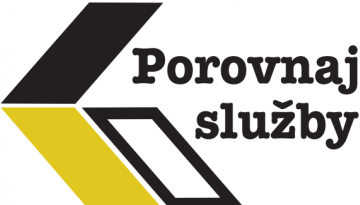30.06.2022 13:15 Date: June 30, 2022 Location: Tags: , , , , , , , , , , , ,
29.06.2022 17:31 Date: June 29, 2022 Location: Tags: , , , , , , , , , , , ,
27.06.2022 01:30 Date: June 27, 2022 Today’s Doodle celebrates Djibouti Independence Day. On this day in 1977, the Republic of Djibouti was established when independence was declared from France. The Djibouti national flag waving in today's artwork was officially adopted in 1977. The flag's design represents Djibouti's multiethnic culture—along with their national motto of unity, equality and peace. Djiboutians commemorate the day with a military parade in the country’s capital, Djibouti City. The national army, led by a colorful marching band, shows new units and equipment to the public. Following the parade, national leaders give speeches to the people of Djibouti in front of the Presidential Palace. Other celebrations include fireworks, fairs and music performances in cities and towns across Djibouti. Citizens eat traditional meals like Skudahkhrais served with a delicious, crispy Sabaayad flatbread. Happy Independence Day, Djibouti! Location: Tags:
25.06.2022 12:30 Date: June 25, 2022 Location: Tags: , , , , , , , , , , , ,
25.06.2022 03:00 Date: June 25, 2022 Today’s Doodle commemorates Slovenia National Day, or Statehood Day, to celebrate the country’s declaration of independence from Yugoslavia in 1991. The Republic of Slovenia flag, like the one seen in today’s Doodle, flew high in the Republic Square in celebration. The official declaration of independence was made in the capital city, Ljubljana, on June 26. The name Ljubljana— which means “the loved one”—is representative of Slovenes pride in their country. The day’s ceremonies are introduced with a firing cannon salute. The fortress serves as a major cultural venue where locals gather for songs, dances and recitals. Dressed in traditional clothing, people of Slovenia skip and twirl with each other to the tune of folk music. Additionally, Slovenia’s National Day is the perfect opportunity to indulge in specialty cheeses, meats, or olive oil fresh from the Mediterranean. Happy Statehood Day, or Dan državnosti, to all who celebrate! Location: Tags: , , , ,
25.06.2022 03:00 Date: June 25, 2022 This post includes mentions of the Holocaust, which may be sensitive to some readers. Today's slideshow Doodle honors globally renowned Jewish German-Dutch diarist and Holocaust victim Anne Frank. Although only written between the ages of 13-15, her personal account of the Holocaust and events of the war remains one of the most poignant and widely-read accounts to date. Today's Doodle features real excerpts from her diary, which describes what she and her friends and family experienced in hiding for over two years. Today is the 75th anniversary of the publication of her diary, which is widely considered one of the most essential books in modern history. Anne Frank was born on June 12, 1929 in Frankfurt, Germany, but her family soon moved to Amsterdam, Netherlands to escape the increasing discrimination and violence faced by millions of minorities at the hands of the growing Nazi party. World War II ignited when Anne was 10 years old, and soon after, Germany invaded the Netherlands, bringing the war to her family’s doorstep. Jewish people were particularly targeted by the Nazi regime, experiencing imprisonment, execution, or forced relocation to inhumane concentration camps. Unable to live and practice freely and safely, millions of Jews were forced to flee their homes or go into hiding. In the spring of 1942, Anne’s family did just that, hiding in a secret annex in her father’s office building to avoid persecution. The Frank family, like millions of others, were forced to act quickly and leave nearly everything behind to seek protection. Among Anne’s few possessions was an unassuming gift she had received on her thirteenth birthday just weeks earlier: a checkered hardback notebook. It soon became her vehicle to change the world forever. Over the following 25 months in hiding, she filled its pages with a heartfelt account of teenage life in the “secret annex,” from small details to her most profound dreams and fears. Hopeful that her diary entries could be published after the war, Anne consolidated her writing into one cohesive story titled “Het Achterhuis” . On August 4, 1944, the Frank family was found out by the Nazi Secret Service, arrested, and taken to a detention center where they were forced to perform hard labor. They were then forcibly deported to the Auschwitz concentration camp in Poland where they lived in cramped, unhygienic conditions. A few months later, Anne and Margot Frank were transported to the Bergen-Belsen concentration camp in Germany. In addition to the brutal, intentional killings of prisoners by Nazi forces, deadly diseases spread rapidly. Eventually, Anne and Margot succumbed to the inhumane conditions they were forced to live in. Anne Frank was just 15 years old. Although Anne Frank did not survive the horrors of the Holocaust, her account of those years, commonly known as “The Diary of Anne Frank,” has since become one of the most widely read works of non-fiction ever published. Translated into upwards of 80 languages, Frank’s memoir is a staple in today’s classrooms, utilized as a tool to educate generations of children about the Holocaust and the terrible dangers of discrimination and tyranny. Thank you, Anne, for sharing a critical window into your experience and our collective past, but also unwavering hope for our future. Pictured: Anne Frank Courtesy of the Anne Frank Fonds Pictured: Anne Frank Courtesy of the Anne Frank Fonds Special thanks to for their collaboration on this project. Below, foundation representatives Yves Kugelmann and Barbara Eldridge share their thoughts on the Doodle and Anne Frank’s legacy. The stories of victims of discrimination and violence often remain unheard. The Diary of Anne Frank bears witness to discrimination and violence. Anne's father, Otto Frank, decided to publish her texts soon after the war, with the aim of warning against anti-Semitism and ethnic marginalisation, as well as creating a foundation for dialogue between generations and countries. He wanted his daughter's diary to give a voice to all victims of Nazism. Today marks the 75th anniversary of the publication of the first edition of Anne Frank's diary, and today's Doodle opens the door to the past but also raises awareness of the present. There are still millions of children around the world today who are fleeing from war, ethnic marginalization, and racism. We hope this Doodle serves as a reminder of their destiny and helps give them a voice in the spirit of Otto Frank's charitable vision as reflected in the creation of the Basel and its partners today, UNICEF and UNESCO. Doodler Q&A with Thoka Maer Today’s Doodle was illustrated by Doodle Art Director Thoka Maer. Below, she shares her thoughts behind the making of this Doodle: Q. Why was this topic meaningful to you personally? A. As a German you always have a very specific relationship to anything relating to the Holocaust. When you grow up German, it is an inescapable part of your identity. My generation doesn’t carry a sense of guilt and all the trepidations that come with it anymore, but there is a deep sense of responsibility and constant awareness of the past and an active effort to preserve the memory to help prevent something like this from happening again. I feel incredibly privileged and honored to contribute to extending history with this Doodle. Q. What were your first thoughts when you started working on this Doodle? A. It was immediately clear how big of a task this was going to be and I felt a huge sense of responsibility. It would be seen internationally and everyone knows Anne. Gladly, there is a whole team behind each Doodle. Being able to rely on Jewish community consultants and having Anne Frank Fonds on board as a decision maker in the process was critical to getting it right. The tragedy of Anne’s story and those that experienced it with her is indescribable and hard to sit with. For anyone. Violence, loss, and guilt are present at every step. I knew I would have to spend a lot of time on thinking about how to do justice to the depth of the tragedy and the severity of the circumstances while also considering that not everyone engaging with the Doodle can or wishes to process the intensity that it has. Q. Did you draw inspiration from anything in particular for this Doodle? A. We developed many different art concepts over time, but landed on something that tries to stay as close to her story as possible. Anne was an incredible writer and had an ability for personal insights we often don’t think people her age are capable of. We wanted to make sure that people could get an introduction to that. The overall design is inspired by the layered collage style of her diary. Besides the original text snippets itself, the scenes and the photographs are all based on her words in the diary itself. Q. What message do you hope people take away from your Doodle? A. We live in a world today in which Anne’s experience is only a variation of some people's current experience or something of their personal past. Anne is an individual that represents millions and makes the tragedy relatable and more accessible. It’s easy to disassociate from these past events given time passed or personal identity differences and always think of the perpetrators as the others. However, the last few years have made us more aware that even those who committed these crimes or silently accepted them were just ‘normal’ people after all. Keeping stories like Anne’s alive and relatable is relevant, always. Especially for a younger generation who are learning about this part of history for the very first time. Location: Tags: , , , , ,
25.06.2022 03:00 Date: June 25, 2022 This post includes mentions of the Holocaust, which may be sensitive to some readers. Today's slideshow Doodle honors globally renowned Jewish German-Dutch diarist and Holocaust victim Anne Frank. Although only written between the ages of 13-15, her personal account of the Holocaust and events of the war remains one of the most poignant and widely-read accounts to date. Today's Doodle features real excerpts from her diary, which describes what she and her friends and family experienced in hiding for over two years. Today is the 75th anniversary of the publication of her diary, which is widely considered one of the most essential books in modern history. Anne Frank was born on June 12, 1929 in Frankfurt, Germany, but her family soon moved to Amsterdam, Netherlands to escape the increasing discrimination and violence faced by millions of minorities at the hands of the growing Nazi party. World War II ignited when Anne was 10 years old, and soon after, Germany invaded the Netherlands, bringing the war to her family’s doorstep. Jewish people were particularly targeted by the Nazi regime, experiencing imprisonment, execution, or forced relocation to inhumane concentration camps. Unable to live and practice freely and safely, millions of Jews were forced to flee their homes or go into hiding. In the spring of 1942, Anne’s family did just that, hiding in a secret annex in her father’s office building to avoid persecution. The Frank family, like millions of others, were forced to act quickly and leave nearly everything behind to seek protection. Among Anne’s few possessions was an unassuming gift she had received on her thirteenth birthday just weeks earlier: a checkered hardback notebook. It soon became her vehicle to change the world forever. Over the following 25 months in hiding, she filled its pages with a heartfelt account of teenage life in the “secret annex,” from small details to her most profound dreams and fears. Hopeful that her diary entries could be published after the war, Anne consolidated her writing into one cohesive story titled “Het Achterhuis” . On August 4, 1944, the Frank family was found out by the Nazi Secret Service, arrested, and taken to a detention center where they were forced to perform hard labor. They were then forcibly deported to the Auschwitz concentration camp in Poland where they lived in cramped, unhygienic conditions. A few months later, Anne and Margot Frank were transported to the Bergen-Belsen concentration camp in Germany. In addition to the brutal, intentional killings of prisoners by Nazi forces, deadly diseases spread rapidly. Eventually, Anne and Margot succumbed to the inhumane conditions they were forced to live in. Anne Frank was just 15 years old. Although Anne Frank did not survive the horrors of the Holocaust, her account of those years, commonly known as “The Diary of Anne Frank,” has since become one of the most widely read works of non-fiction ever published. Translated into upwards of 80 languages, Frank’s memoir is a staple in today’s classrooms, utilized as a tool to educate generations of children about the Holocaust and the terrible dangers of discrimination and tyranny. Thank you, Anne, for sharing a critical window into your experience and our collective past, but also unwavering hope for our future. Pictured: Anne Frank Courtesy of the Anne Frank Fonds Pictured: Anne Frank Courtesy of the Anne Frank Fonds Special thanks to for their collaboration on this project. Below, foundation representatives Yves Kugelmann and Barbara Eldridge share their thoughts on the Doodle and Anne Frank’s legacy. The stories of victims of discrimination and violence often remain unheard. The Diary of Anne Frank bears witness to discrimination and violence. Anne's father, Otto Frank, decided to publish her texts soon after the war, with the aim of warning against anti-Semitism and ethnic marginalisation, as well as creating a foundation for dialogue between generations and countries. He wanted his daughter's diary to give a voice to all victims of Nazism. Today marks the 75th anniversary of the publication of the first edition of Anne Frank's diary, and today's Doodle opens the door to the past but also raises awareness of the present. There are still millions of children around the world today who are fleeing from war, ethnic marginalization, and racism. We hope this Doodle serves as a reminder of their destiny and helps give them a voice in the spirit of Otto Frank's charitable vision as reflected in the creation of the Basel and its partners today, UNICEF and UNESCO. Doodler Q&A with Thoka Maer Today’s Doodle was illustrated by Doodle Art Director Thoka Maer. Below, she shares her thoughts behind the making of this Doodle: Q. Why was this topic meaningful to you personally? A. As a German you always have a very specific relationship to anything relating to the Holocaust. When you grow up German, it is an inescapable part of your identity. My generation doesn’t carry a sense of guilt and all the trepidations that come with it anymore, but there is a deep sense of responsibility and constant awareness of the past and an active effort to preserve the memory to help prevent something like this from happening again. I feel incredibly privileged and honored to contribute to extending history with this Doodle. Q. What were your first thoughts when you started working on this Doodle? A. It was immediately clear how big of a task this was going to be and I felt a huge sense of responsibility. It would be seen internationally and everyone knows Anne. Gladly, there is a whole team behind each Doodle. Being able to rely on Jewish community consultants and having Anne Frank Fonds on board as a decision maker in the process was critical to getting it right. The tragedy of Anne’s story and those that experienced it with her is indescribable and hard to sit with. For anyone. Violence, loss, and guilt are present at every step. I knew I would have to spend a lot of time on thinking about how to do justice to the depth of the tragedy and the severity of the circumstances while also considering that not everyone engaging with the Doodle can or wishes to process the intensity that it has. Q. Did you draw inspiration from anything in particular for this Doodle? A. We developed many different art concepts over time, but landed on something that tries to stay as close to her story as possible. Anne was an incredible writer and had an ability for personal insights we often don’t think people her age are capable of. We wanted to make sure that people could get an introduction to that. The overall design is inspired by the layered collage style of her diary. Besides the original text snippets itself, the scenes and the photographs are all based on her words in the diary itself. Q. What message do you hope people take away from your Doodle? A. We live in a world today in which Anne’s experience is only a variation of some people's current experience or something of their personal past. Anne is an individual that represents millions and makes the tragedy relatable and more accessible. It’s easy to disassociate from these past events given time passed or personal identity differences and always think of the perpetrators as the others. However, the last few years have made us more aware that even those who committed these crimes or silently accepted them were just ‘normal’ people after all. Keeping stories like Anne’s alive and relatable is relevant, always. Especially for a younger generation who are learning about this part of history for the very first time. Location: Tags: , , , , ,
25.06.2022 03:00 Date: June 25, 2022 Esta publicación puede herir la sensibilidad de algunos usuarios ya que hace mención al Holocausto. El Doodle de hoy en forma de presentación homenajea a la judía Ana Frank. Nacida en Alemania pero neerlandesa de adopción, es conocida mundialmente por su diario y por ser víctima del Holocausto. A pesar de haberlo escrito únicamente cuando tenía entre 13 y 15 años, su relato personal acerca del Holocausto y los acontecimientos de la guerra sigue siendo una de las historias más conmovedoras y leídas hasta la fecha. El Doodle de hoy incluye extractos de su diario que describen las vivencias tanto de ella como de sus amigos y familiares mientras se escondían durante más de dos años. Hoy se cumplen 75 años de la publicación de su diario, considerado mundialmente como uno de los libros imprescindibles de la historia moderna. Ana Frank nació el 12 de junio de 1929, en Fráncfort , pero su familia se mudó poco después a Ámsterdam . Tomaron la decisión de mudarse para escapar de la cada vez mayor discriminación y violencia que el creciente partido nazi ejercía sobre los millones de personas que formaban las minorías. La II Guerra Mundial empezó cuando Ana tenía 10 años. Poco después, los alemanes invadieron los Países Bajos y llevaron la guerra a un paso de su casa. El régimen nazi tenía como objetivo específico a los judíos, quienes eran encarcelados, ejecutados o forzados a trasladarse a inhumanos campos de concentración. Al no poder disfrutar de una vida libre y segura, millones de judíos se vieron forzados a dejar sus hogares o a esconderse. Eso fue precisamente lo que hizo la familia de Ana, que para librarse de la persecución, se escondió en un anexo del edificio en el que se encontraba la oficina del padre en la primavera de 1942. La familia Frank, como millones de personas más, se vio obligada a reaccionar rápidamente y dejar prácticamente todo atrás para buscar protección. Entre las pocas posesiones de Ana se encontraba un modesto regalo que recibió unas semanas atrás, cuando cumplió trece años: un cuaderno con tapa dura a cuadros. Pronto se convirtió en la forma en que cambiaría el mundo para siempre. Durante los 25 meses que estuvo escondida, llenó las páginas con un relato sincero de la vida de una adolescente en un “anexo secreto”: desde los pequeños detalles hasta sus sueños y miedos más íntimos. Con la esperanza de que se publicase su diario después de la guerra, Ana combinó todo lo que había escrito en una historia congruente a la que llamó “Het Achterhuis” . El 4 de agosto de 1944, el servicio secreto nazi encontró, detuvo y envió a un centro de detención a la familia Frank, donde se vieron obligados a realizar trabajos forzados. Después, fueron deportados al campo de concentración de Auschwitz en Polonia, donde vivieron en muy poco espacio y en condiciones antihigiénicas. Unos meses después, Ana y Margot Frank fueron llevadas al campo de concentración de Bergen-Belsen en Alemania. Además de los brutales asesinatos intencionados a los prisioneros por parte de las fuerzas nazis, las enfermedades mortales se expandían rápidamente. Con el tiempo, Ana y Margot sucumbieron a las condiciones inhumanas en las que se vieron obligadas a vivir. Ana Frank tenía solamente 15 años. A pesar de que Ana Frank no sobrevivió a los horrores del Holocausto, su relato de esos años, conocido como “El diario de Ana Frank”, se ha convertido en una de las lecturas no ficticias más leídas de la historia. Las memorias de Ana Frank se han convertido en una obra esencial en las escuelas de hoy en día. Traducidas a más de 80 idiomas, son una herramienta para educar a las nuevas generaciones acerca del Holocausto y los peligros que suponen la discriminación y la opresión. Gracias, Ana, por compartir esa parte importante de tu experiencia y de nuestro pasado colectivo, pero también por darnos una esperanza firme para nuestro futuro. Fotografía de Ana Frank Cortesía de Anne Frank Fonds Fotografía de Ana Frank Cortesía de Anne Frank Fonds Queremos agradecer de forma especial a por su colaboración en este proyecto. A continuación, los representantes de la fundación, Yves Kugelmann y Barbara Eldridge, comparten sus opiniones acerca del Doodle y el legado de Ana Frank. A menudo nunca se llegan a conocer las historias de víctimas de discriminación y violencia. El Diario de Ana Frank da testimonio a la discriminación y a la violencia. El padre de Ana, Otto Frank, decidió publicar sus textos justo después de la guerra, con el objetivo de prevenir el antisemitismo y la marginación por etnia, así como crear una fundación para el diálogo entre generaciones y países. Quería que el diario de su hija diera voz a todas las víctimas del nazismo. Hoy hace 75 años que se publicó la primera edición del Diario de Ana Frank y el Doodle de hoy abre la puerta al pasado pero también sensibiliza acerca del presente. Sigue habiendo millones de niños en todo el mundo que huyen de la guerra, de la marginación por etnia y del racismo. Esperamos que este Doodle sirva como recordatorio de sus destinos y les ayude a encontrar su voz en el espíritu de la visión caritativa de Otto Frank. Visión reflejada hoy en la creación de Anne Frank Fonds en Basilea y sus colaboradores UNICEF y UNESCO. Preguntas y respuestas de Doodler con Thoka Maer La directora artística Thoka Maer ha ilustrado el Doodle de hoy. A continuación, nos cuenta qué se esconde detrás de la creación de este Doodle: P. ¿Por qué este tema significa tanto para ti? R. Como alemana, tengo un sentimiento muy particular con todo lo que tiene que ver con el Holocausto. Es algo de lo que no puedes escapar, es parte de tu identidad. Mi generación ya no tiene ese sentimiento de culpa ni la ansiedad por todo lo relacionado con este tema. Pero sí que tenemos un sentimiento profundo de responsabilidad. Somos plenamente conscientes de todo lo ocurrido y nos esforzamos por preservar la memoria y ayudar a evitar que algo parecido vuelva a ocurrir. Para mí es todo un honor poder contribuir a expandir la historia con este Doodle. P. ¿Qué fue lo primero que pensaste cuando empezaste a trabajar en este Doodle? R. Tuve claro desde el principio que era una tarea muy importante y sentí una gran responsabilidad. Todos conocemos la historia de Ana y es algo que se va a publicar en todo el mundo. Afortunadamente, hay todo un equipo detrás de cada Doodle. Fue indispensable contar con asesores de la comunidad judía, así como con Anne Frank Fonds en Basilea como responsables de la toma de decisiones durante el proceso. La trágica historia de Ana y todos aquellos que la sufrieron con ella es difícil de digerir e imposible de describir para cualquier persona. La violencia, la pérdida y la culpabilidad están presentes en cada momento. Supe que tendría que pasar mucho tiempo pensando en cómo hacer justicia a la gran tragedia y la importancia de las circunstancias. A su vez, también tenía que tener en cuenta que no todo el mundo que vea el Doodle puede o quiere procesar la intensidad de este. P. ¿Te inspiraste en algo en particular en este Doodle? R. Desarrollamos muchos conceptos artísticos distintos, pero nos decantamos por el que mejor reflejaba su historia. Ana era una escritora increíble y tenía la habilidad de percibir las cosas de una forma poco habitual para alguien de su edad. Queríamos asegurarnos de que la gente tuviera esa idea inicial. El diseño en general está inspirado en el collage por capas que tiene su diario. Además de los fragmentos originales, tanto las escenas como las fotografías están basadas en los textos de su diario. P. ¿Cuál es el mensaje que quieres que llegue a la gente con tu Doodle? R. Hoy en día vivimos en un mundo en el que la experiencia de Ana es solo una variante de lo que algunas personas están viviendo o han vivido. Ana es una persona que representa a millones y que consigue que nos identifiquemos con la tragedia y que nos sea más accesible. Es fácil desvincularse de los eventos del pasado según va pasando el tiempo o por diferencias de identidad personal. Siempre pensamos que los responsables son otros. Sin embargo, en los últimos años hemos tenido más conciencia de que aquellos que apoyaron o callaron ante estos crímenes, no eran más que gente “normal”. Es importante mantener vivas y contar historias como las de Ana, siempre. Sobre todo para la generación más joven que está conociendo por primera vez esta parte de nuestra historia. Location: , , , , , , , , , , , , , , , , , Tags: , , , , ,
25.06.2022 03:00 Date: June 25, 2022 Dieser Beitrag beinhaltet Schilderungen des Holocausts, welche für einige Leser:innen ein sensibles Thema darstellen können. Das heutige Diashow-Doodle ehrt die weltweit bekannte jüdische deutsch-niederländische Tagebuch-Autorin und Opfer des Holocausts Anne Frank. Obwohl Anne ihr Tagebuch erst im Alter von 13 bis 15 Jahren schrieb, sind ihre persönlichen Schilderungen des Holocaust und der Kriegsereignisse bis heute eine der ergreifendsten und meistgelesenen Dokumentationen. Das heutige Doodle zeigt originale Auszüge aus ihrem Tagebuch, in dem sie beschreibt, was sie und ihre Freunde und Familie während ihres zweijährigen Aufenthaltes im Versteck erlebten. Heute ist der 75. Jahrestag der Erstveröffentlichung ihres Tagebuchs, das weithin als eines der wichtigsten Bücher der modernen Geschichte gilt. Anne Frank wurde am 12. Juni 1929 in Frankfurt am Main geboren, doch schon 1933 zog sie mit ihrer Familie nach Amsterdam. Annes Familie flüchtete vor der wachsenden nationalsozialistischen Partei und ihrer Diskriminierung und Gewalt gegenüber Millionen von Minderheiten. Als Anne 10 Jahre alt war, brach der Zweite Weltkrieg aus, woraufhin kurze Zeit später Deutschland in die Niederlande einmarschierte und so den Krieg vor die Haustür Annes Familie brachte. Die Nationalsozialsozialisten begannen nun auch in den Niederlanden die Verfolgung von Juden und ließen diese hinrichten oder in Konzentrationslager verschleppen. Da sie nicht mehr frei und sicher leben konnten, waren Millionen von Juden gezwungen, aus ihrer Heimat zu fliehen oder unterzutauchen. Im Frühjahr 1942 versuchte auch Annes Familie der Verfolgung zu entkommen und versteckte sich in einem geheimen Anbau im Bürogebäude ihres Vaters. Die Familie Frank war wie Millionen andere gezwungen, schnell zu handeln und fast ihr gesamtes Hab und Gut zurückzulassen, um Schutz zu suchen. Zu Annes wenigen verbliebenen Besitztümern gehörte ein kleines Geschenk, das sie nur wenige Wochen zuvor zu ihrem dreizehnten Geburtstag erhalten hatte: ein kariertes Notizbuch mit festem Einband. Es wurde bald zu ihrem persönlichen Werkzeug, um die Welt für immer zu verändern. In den folgenden 25 Monaten füllte sie die Seiten mit aufrichtigen Schilderungen über ihr Leben als Teenagerin im "geheimen Anbau", von kleinen Details bis hin zu ihren tiefsten Träumen und Ängsten. In der Hoffnung, dass ihre Tagebucheinträge nach dem Krieg veröffentlicht werden könnten, fasste Anne ihre Berichte zu einer zusammenhängenden Geschichte mit dem Titel "Het Achterhuis" zusammen. Am 4. August 1944 wurde die Familie Frank vom nationalsozialistischen Geheimdienst entdeckt, verhaftet und in ein Internierungslager gebracht, wo sie Zwangsarbeit verrichten musste. Anschließend wurden sie in das Konzentrationslager Auschwitz in Polen deportiert, wo sie unter äußerst schwierigen Bedingungen und auf engstem Raum lebten. Einige Monate später wurden Anne und Margot Frank in das Konzentrationslager Bergen-Belsen in Deutschland transportiert. Neben der brutalen Hinrichtung von Gefangenen durch die Nationalsozialisten breiteten sich in den Lagern tödliche Krankheiten rasch aus. Schließlich erlagen Anne und Margot den unmenschlichen Bedingungen, unter denen sie zu leben gezwungen waren. Anne Frank war gerade einmal 15 Jahre alt. Obwohl Anne Frank die Schrecken des Holocaust nicht überlebte, ist ihr Bericht über diese Jahre, welcher weltweit als "Das Tagebuch der Anne Frank" bekannt ist, zu einem der meistgelesenen Sachbücher geworden, die je veröffentlicht wurden. In mehr als 80 Sprachen übersetzt sind Annes historischen Dokumentationen heute ein fester Bestandteil in den Klassenzimmern, um Generationen von Kindern über den Holocaust und die schrecklichen Gefahren von Diskriminierung und Gewalt aufzuklären. Vielen Dank, Anne, dass Du uns diesen mitreißenden Einblick in Deine Erfahrungen und unsere gemeinsame Vergangenheit, aber auch die unerschütterliche Hoffnung für unsere Zukunft gegeben hast. Auf dem Bild: Anne Frank Mit Genehmigung des Anne Frank Fonds Auf dem Bild: Anne Frank Mit Genehmigung des Anne Frank Fonds Besonderer Dank gilt dem für die Zusammenarbeit an diesem Projekt. Im Folgenden teilen die Stiftungsvertreterinnen Yves Kugelmann und Barbara Eldridge ihre Gedanken zu Anne Franks Vermächtnis und diesem Doodle mit. Die Geschichten der Opfer von Diskriminierung und Gewalt bleiben oft ungehört. Das Tagebuch der Anne Frank ist ein Zeugnis für Diskriminierung und Gewalt. Annes Vater, Otto Frank, beschloss kurz nach dem Krieg, ihre Texte zu veröffentlichen, um vor Antisemitismus und ethnischer Ausgrenzung zu warnen und ein Fundament für den Dialog zwischen Generationen und Ländern zu schaffen. Er wollte, dass das Tagebuch seiner Tochter allen Opfern des Nationalsozialismus eine Stimme gibt. Heute ist der 75. Jahrestag der Veröffentlichung der ersten Ausgabe des Tagebuchs von Anne Frank, und das heutige Doodle öffnet eine Tür zur Vergangenheit, macht aber zugleich auf die Gegenwart aufmerksam. Es gibt auch heute noch Millionen von Kindern auf der ganzen Welt, die vor Krieg, ethnischer Ausgrenzung und Rassismus fliehen müssen. Wir hoffen, dass dieses Doodle an ihr Schicksal erinnert und dazu beiträgt, ihnen eine Stimme zu geben, ganz im Sinne von Otto Franks wohltätiger Vision, die sich in der Gründung des Anne Frank Fonds Basel und seiner heutigen Partner, UNICEF und UNESCO, widerspiegelt. Doodler Q&A mit Thoka Maer Das heutige Doodle wurde von der Doodle Art Directorin Thoka Maer illustriert. Im Folgenden erzählt sie, was sie über die Entstehung dieses Doodles denkt: Q. Warum war dieses Thema für Dich persönlich von Bedeutung? A. Als Deutsche hat man eine ganz besondere Beziehung zu allem, was in Verbindung zum Holocaust steht. Wenn man als Deutsche aufgewachsen ist, ist der Holocaust ein unausweichlicher Teil der eigenen Identität. In meiner Generation sind die Schuldgefühle und die damit verbundenen Ängste nicht mehr präsent, aber es gibt ein tiefes Verantwortungsgefühl und ein ständiges Bewusstsein für die Vergangenheit sowie ein aktives Bemühen, die Erinnerung aufrechtzuerhalten um zu verhindern, dass so etwas noch einmal passiert. Ich fühle mich unglaublich privilegiert und geehrt, mit diesem Doodle dazu beizutragen, die Geschichte weiterzuerzählen. Q. Was waren Deine ersten Gedanken, als Du mit der Arbeit an diesem Doodle begonnen hast? A. Mir war sofort klar, wie groß diese Aufgabe sein würde und ich fühlte eine große Verantwortung. Das Doodle sollte internationale Visibilität erlangen und jeder kennt Anne. Zum Glück steht aber hinter jedem Doodle ein gesamtes Team. Die Beratung der jüdischen Gemeinde und des Anne Frank Fonds war zudem entscheidend, um alles richtig zu machen. Die Tragödie von Annes Geschichte und all derjenigen, die sie miterlebt haben, ist unbeschreiblich und schwer zu verarbeiten. Für uns alle. Gewalt, Verlust und Schuld sind in jedem Schritt präsent. Ich wusste, dass ich viel Zeit damit verbringen würde, der Tiefe der Tragödie und der Schwere der Umstände gerecht zu werden, aber auch gleichzeitig zu berücksichtigen, dass nicht jede Person, sich sich mit dem Doodle beschäftigt, die Intensität, die es hat, verarbeiten kann oder will. Q. Gab es für dieses Doodle eine bestimmte Inspiration? A. Wir haben im Laufe der Zeit viele verschiedene Konzepte entwickelt, wir haben uns aber letztendlich für ein Doodle entschieden, das so nah wie möglich an Annes Geschichte bleibt. Anne war eine unglaubliche Autorin und hatte die Fähigkeit, persönliche Einblicke zu teilen, die wir Menschen in ihrem Alter oft nicht zutrauen. Wir wollten sicherstellen, dass die Menschen einen Einblick in ihre Geschichte erhalten. Das Gesamtdesign ist inspiriert von dem mehrschichtigen Collage-Stil ihres Tagebuchs. Neben den originalen Textfragmenten selbst, basieren auch die Szenen und Fotos auf ihren Tagebucheinträgen. Q. Welche Botschaft hoffst Du, nehmen die Menschen aus diesem Doodle mit? A. Wir leben heute in einer Welt, in der Annes Erfahrung nur ein Einblick der aktuellen Erfahrung einiger Menschen oder ihrer persönlichen Vergangenheit ist. Anne ist ein Individuum, das für Millionen von Menschen steht und ihre Tragödien greifbar macht. Es ist leicht, sich von diesen vergangenen Ereignissen zu distanzieren, da einige Zeit verstrichen ist oder man sich persönlich nicht damit identifizieren kann und an die Täter nur als “die anderen" denkt. In den letzten Jahren ist uns jedoch bewusster geworden, dass auch diejenigen, die diese Verbrechen begangen oder stillschweigend hingenommen haben, letztlich ganz "gewöhnliche" Menschen waren. Geschichten wie die von Anne greifbar zu machen und am Leben zu halten, ist enorm wichtig. Vor allem für die jüngere Generation, die zum ersten Mal mit diesem Abschnitt der Geschichte in Berührung kommt. Location: , , Tags: , , , , ,
24.06.2022 17:30 Date: June 25, 2022 Location: Tags: , , , , ,
23.06.2022 04:46 Date: June 23, 2022 Location: , Tags: , , ,
22.06.2022 10:45 Date: June 22, 2022 Location: Tags: , , , , , , , , , , , ,
21.06.2022 16:30 Date: June 21, 2022 Today’s Doodle—illustrated by Anishinaabe guest artists and —celebrates Norval Morrisseau , an Indigenous Canadian artist from the Bingwi Neyaashi Anishinaabek First Nation. Morrisseau is widely considered the grandfather of contemporary Indigenous art in Canada, and his work paved the way for the emergence of Indigenous artwork in mainstream galleries. Today, on Canada’s National Indigenous Peoples Day, we honor Morrisseau and his paintings that beautifully captured the stories of Indigenous tradition. Norval Morriseau—whose Ojibwa name was Copper Thunderbird—was born on the Sand Point a reserve in Ontario, Canada, on March 14, 1932. He was raised by his maternal grandparents, who helped instill his pride for Anishinaabe culture and traditions. At the age of six, Morriseau was forced to leave his home and attend residential school—a place where traditional Native ceremonies were banned and speaking traditional languages was forbidden. Despite the trauma and hardships he experienced in his youth, Morrisseau was fueled by his desire to preserve his people’s traditions. His grandfather, a Shaman trained within the Midewiwin spiritual tradition, had introduced Morrisseau to shamanism and passed down the stories and legends of the Ojibwa people. As Morrisseau entered adulthood, he began exploring ways to incorporate Anishinabek oral traditions and imagery through his artwork. In 1962, he hosted an exhibit at the Pollock Gallery in Toronto, marking his official debut to the art world and the first time an Indigenous artist was featured in a major contemporary art gallery in Canada. His art style became known as Woodland painting, combining rich colors, birch-bark scroll etchings and, oftentimes, skeletal animals and people. Morrisseau’s work represented a unique intersection between traditional Indigenous imagery and modern art styles. His path to success has not been simple - Morrisseau’s artwork has unfortunately been the subject of ongoing art fraud and plagiarism cases, as many sought to capitalize on the value earned through his unique style. Over his multi-decade career, Morrisseau’s artwork was featured in exhibits across Canada, Europe and the world. Some of his notable paintings include Moose Dream Legend , Conquest of the Thunderbird , Androgyny , and Observations of the Astral World . Morrisseau also leveraged his growing influence to advocate and support emerging First Nations artists, such as Daphne Odjig and Roy Thomas. He was an original member of the Indian Group of Seven—a group dedicated to uplifting the next generations of Indigenous artists. Morrisseau’s contributions led to his recognition as the grandfather of contemporary Indigenous art in North America. Today, we can see Morrisseau’s legacy recognized on the global stage as a renowned artist, a revolutionary, and Indigenous icon. His ability to shatter societal, sexual, and commonly held stereotypes exemplifies the perseverance and power that countless Indigenous peoples experience. On National Indigenous Peoples Day, and everyday, we look to celebrate these achievements and recognize the contributions that Indigenous peoples have had and continue to have on Turtle Island. Thank you, Morrisseau for sharing the stories of your Indigenous culture through art with the world! Guest Artist Q&A with Blake Angeconeb and Danielle Morrison Today’s Doodle was illustrated by Anishinaabe guest artists and . Below, they share their thoughts behind the making of this Doodle: Q: When and how did your life story intersect with that of Norval Morrisseau? Blake: I started painting in 2013. At the time, I was painting portraits of my favorite musicians and icons. I remember first truly discovering Norval’s work shortly after that. I was instantly drawn into his work and fell in love with it. I would spend my lunch breaks at the local library reading every book written about him. His art has greatly influenced my life as I paint in the Woodland style as well. I wouldn’t be who I am without Norval. Danielle: Growing up, there was a large picture book of Norval’s paintings always on our bookshelf. I was raised in Kenora, Ontario, where I learned from stories that my father told that Norval spent periods of his life—which weren’t always happy. I came to understand Norval as one of the many Anishinaabeg around Lake of the Woods who lived troubled lives as a result of trauma from the Indian Residential School system. It amazed me that he overcame so much adversity to create such beauty in art. I also believed him to be a relative of mine, as our families shared the same last name—my grandfather was a Morrisseau before he attended Cecelia Jeffrey Residential School, where they changed it to Morrison. When I reached my senior year of high school, I decided to pursue Fine Arts in university. I spent those years studying much of Norval’s work. I felt close to him for much of my formative years as a young adult. Q: Can you tell us more about the artistic vision and interpretation of this Doodle? In what ways does it pay homage to Norval Morrisseau and his roots? Blake: This Doodle is done in the Woodlands school of art, which Norval was the master of. He brought this art form into the light. In the Doodle we have a thunderbird, snake, two birds, Norval’s portrait and another snake, all accompanied by traditional Anishinaabe florals throughout. The imagery is done with thick black lines and layered colors like Norval did. Danielle: Norval was very much inspired by our Anishinaabe culture and the surroundings of Lake of the Woods. A similar color palette, references to natural life, and the spirit of ceremony are all present in this Doodle. I have always loved Norval’s florals and their organic feel. It made sense to encompass the doodle in Anishinaabe florals reminiscent of his style. It gives the artwork life. Q: How do you think Norval shaped, contributed and influenced culture and the art world? Danielle: As a scholar of Fine Arts, I can confidently say that Norval’s influence was far-reaching and made a great impact on the world of art. On the other hand, I didn’t necessarily learn of this from attending university, given that much of my education was Western-focused and rarely covered Indigenous artists. I learned this through life experience and witnessing the space he created for other Indigenous artists to succeed. So many Indigenous artists today, myself included, are inspired by Norval’s legacy and his tenacity to create something that the art world had never seen before. He teaches us to be proud of who we are as Anishinaabe people, to live beyond stereotypes, and to create without limitations. Q: Can you explain how Norval earned the Copper Thunderbird nickname? Blake: This is his Anishinaabe name. He received this name when he was very ill and it healed him. Q: Why do you think he’s considered the Picasso of the North? Danielle: Picasso broke tradition and revolutionized art. In a lot of ways, Norval did the same with art and Anishinaabe culture. He was highly criticized by our own community for sharing so much of what was considered ceremonial and only accessible by people who practiced those teachings. The subject matter of his art—whether it was cultural references or about sexuality—were considered very taboo. Even today, there are many who are not so accepting of the mixing of contemporary concepts or sacred teachings represented in the Woodlands school of art. It did not matter to Norval. He persevered with his ideas and creativity, and left an incredible imprint on the history of art. Q: What is your fondest memory or experience with him? Blake: Sadly, I never had the opportunity to meet him. However, I feel his spirit whenever I’m in the presence of his work and am grateful for that. I always enjoy hearing stories about him as well. Q: What do you wish people would know about Norval Morrisseau and how can we honor his legacy? Blake: I wish everyone would acknowledge the beauty he brought into this world. His art channeled our culture and stories, which were told with his drawings and paintings. His work has helped tell our stories and will continue to do so, as his art is always going to be here. He used his gift to better the world and shared it with everyone. I truly believe his art has a higher purpose and is meant to help everyone heal. Danielle: It’s important for all to understand that Norval’s art was informed by Anishinaabe teachings of interconnectivity—we are all related, we are all energetic beings. Norval held the Anishinaabe worldview that is accepting of all sexualities, genders, races, and religions. People should know that Norval himself was bisexual. It is fitting that this Doodle is being launched during June, which is both Pride and National Indigenous History month in Canada. In a world where there is so much violence driven by hatred and divide, we could all stand to gain more peace and mutual understanding by practicing and living the spirit of Norval’s legacy and teachings. Q: If people want to experience his art and learn more, where should they go? Danielle: We encourage others to learn more about Norval Morrisseau through the Q: What can we all do to better support indigenous artists here in Canada? Danielle: Society needs to recognize Indigenous artists as individuals with their own unique artistic visions that are beyond the romanticized idea of what “Indigenous art” should be. Indigenous artists cannot be expected to represent all Indigenous people. To support Indigenous artists is to also support artistic concepts that are beyond the stereotypes and basic cultural motifs of eagle feathers and medicine wheels. Indigenous artists practice in all mediums — beadwork, carving, sewing, painting, song, and dance. Every medium is deserving of proper compensation. Indigenous artists have spent hours, years, decades, honing their craft — an act of cultural reclamation and revitalization in and of itself. The best way to support Indigenous artists is to buy Indigenous art. Lift Indigenous artists up by supporting their livelihood so they can inspire the next generation of Indigenous artists to carry on the legacy. Location: Tags: , , , , ,
21.06.2022 07:30 Date: June 21, 2022 Today’s Doodle—illustrated by Anishinaabe guest artists and —celebrates Norval Morrisseau , an Indigenous Canadian artist from the Bingwi Neyaashi Anishinaabek First Nation. Morrisseau is widely considered the grandfather of contemporary Indigenous art in Canada, and his work paved the way for the emergence of Indigenous artwork in mainstream galleries. Today, on Canada’s National Indigenous Peoples Day, we honor Morrisseau and his paintings that beautifully captured the stories of Indigenous tradition. Norval Morriseau—whose Ojibwa name was Copper Thunderbird—was born on the Sand Point a reserve in Ontario, Canada, on March 14, 1932. He was raised by his maternal grandparents, who helped instill his pride for Anishinaabe culture and traditions. At the age of six, Morriseau was forced to leave his home and attend residential school—a place where traditional Native ceremonies were banned and speaking traditional languages was forbidden. Despite the trauma and hardships he experienced in his youth, Morrisseau was fueled by his desire to preserve his people’s traditions. His grandfather, a Shaman trained within the Midewiwin spiritual tradition, had introduced Morrisseau to shamanism and passed down the stories and legends of the Ojibwa people. As Morrisseau entered adulthood, he began exploring ways to incorporate Anishinabek oral traditions and imagery through his artwork. In 1962, he hosted an exhibit at the Pollock Gallery in Toronto, marking his official debut to the art world and the first time an Indigenous artist was featured in a major contemporary art gallery in Canada. His art style became known as Woodland painting, combining rich colors, birch-bark scroll etchings and, oftentimes, skeletal animals and people. Morrisseau’s work represented a unique intersection between traditional Indigenous imagery and modern art styles. His path to success has not been simple - Morrisseau’s artwork has unfortunately been the subject of ongoing art fraud and plagiarism cases, as many sought to capitalize on the value earned through his unique style. Over his multi-decade career, Morrisseau’s artwork was featured in exhibits across Canada, Europe and the world. Some of his notable paintings include Moose Dream Legend , Conquest of the Thunderbird , Androgyny , and Observations of the Astral World . Morrisseau also leveraged his growing influence to advocate and support emerging First Nations artists, such as Daphne Odjig and Roy Thomas. He was an original member of the Indian Group of Seven—a group dedicated to uplifting the next generations of Indigenous artists. Morrisseau’s contributions led to his recognition as the grandfather of contemporary Indigenous art in North America. Today, we can see Morrisseau’s legacy recognized on the global stage as a renowned artist, a revolutionary, and Indigenous icon. His ability to shatter societal, sexual, and commonly held stereotypes exemplifies the perseverance and power that countless Indigenous peoples experience. On National Indigenous Peoples Day, and everyday, we look to celebrate these achievements and recognize the contributions that Indigenous peoples have had and continue to have on Turtle Island. Thank you, Morrisseau for sharing the stories of your Indigenous culture through art with the world! Guest Artist Q&A with Blake Angeconeb and Danielle Morrison Today’s Doodle was illustrated by Anishinaabe guest artists and . Below, they share their thoughts behind the making of this Doodle: Q: When and how did your life story intersect with that of Norval Morrisseau? Blake: I started painting in 2013. At the time, I was painting portraits of my favorite musicians and icons. I remember first truly discovering Norval’s work shortly after that. I was instantly drawn into his work and fell in love with it. I would spend my lunch breaks at the local library reading every book written about him. His art has greatly influenced my life as I paint in the Woodland style as well. I wouldn’t be who I am without Norval. Danielle: Growing up, there was a large picture book of Norval’s paintings always on our bookshelf. I was raised in Kenora, Ontario, where I learned from stories that my father told that Norval spent periods of his life—which weren’t always happy. I came to understand Norval as one of the many Anishinaabeg around Lake of the Woods who lived troubled lives as a result of trauma from the Indian Residential School system. It amazed me that he overcame so much adversity to create such beauty in art. I also believed him to be a relative of mine, as our families shared the same last name—my grandfather was a Morrisseau before he attended Cecelia Jeffrey Residential School, where they changed it to Morrison. When I reached my senior year of high school, I decided to pursue Fine Arts in university. I spent those years studying much of Norval’s work. I felt close to him for much of my formative years as a young adult. Q: Can you tell us more about the artistic vision and interpretation of this Doodle? In what ways does it pay homage to Norval Morrisseau and his roots? Blake: This Doodle is done in the Woodlands school of art, which Norval was the master of. He brought this art form into the light. In the Doodle we have a thunderbird, snake, two birds, Norval’s portrait and another snake, all accompanied by traditional Anishinaabe florals throughout. The imagery is done with thick black lines and layered colors like Norval did. Danielle: Norval was very much inspired by our Anishinaabe culture and the surroundings of Lake of the Woods. A similar color palette, references to natural life, and the spirit of ceremony are all present in this Doodle. I have always loved Norval’s florals and their organic feel. It made sense to encompass the doodle in Anishinaabe florals reminiscent of his style. It gives the artwork life. Q: How do you think Norval shaped, contributed and influenced culture and the art world? Danielle: As a scholar of Fine Arts, I can confidently say that Norval’s influence was far-reaching and made a great impact on the world of art. On the other hand, I didn’t necessarily learn of this from attending university, given that much of my education was Western-focused and rarely covered Indigenous artists. I learned this through life experience and witnessing the space he created for other Indigenous artists to succeed. So many Indigenous artists today, myself included, are inspired by Norval’s legacy and his tenacity to create something that the art world had never seen before. He teaches us to be proud of who we are as Anishinaabe people, to live beyond stereotypes, and to create without limitations. Q: Can you explain how Norval earned the Copper Thunderbird nickname? Blake: This is his Anishinaabe name. He received this name when he was very ill and it healed him. Q: Why do you think he’s considered the Picasso of the North? Danielle: Picasso broke tradition and revolutionized art. In a lot of ways, Norval did the same with art and Anishinaabe culture. He was highly criticized by our own community for sharing so much of what was considered ceremonial and only accessible by people who practiced those teachings. The subject matter of his art—whether it was cultural references or about sexuality—were considered very taboo. Even today, there are many who are not so accepting of the mixing of contemporary concepts or sacred teachings represented in the Woodlands school of art. It did not matter to Norval. He persevered with his ideas and creativity, and left an incredible imprint on the history of art. Q: What is your fondest memory or experience with him? Blake: Sadly, I never had the opportunity to meet him. However, I feel his spirit whenever I’m in the presence of his work and am grateful for that. I always enjoy hearing stories about him as well. Q: What do you wish people would know about Norval Morrisseau and how can we honor his legacy? Blake: I wish everyone would acknowledge the beauty he brought into this world. His art channeled our culture and stories, which were told with his drawings and paintings. His work has helped tell our stories and will continue to do so, as his art is always going to be here. He used his gift to better the world and shared it with everyone. I truly believe his art has a higher purpose and is meant to help everyone heal. Danielle: It’s important for all to understand that Norval’s art was informed by Anishinaabe teachings of interconnectivity—we are all related, we are all energetic beings. Norval held the Anishinaabe worldview that is accepting of all sexualities, genders, races, and religions. People should know that Norval himself was bisexual. It is fitting that this Doodle is being launched during June, which is both Pride and National Indigenous History month in Canada. In a world where there is so much violence driven by hatred and divide, we could all stand to gain more peace and mutual understanding by practicing and living the spirit of Norval’s legacy and teachings. Q: If people want to experience his art and learn more, where should they go? Danielle: We encourage others to learn more about Norval Morrisseau through the Q: What can we all do to better support indigenous artists here in Canada? Danielle: Society needs to recognize Indigenous artists as individuals with their own unique artistic visions that are beyond the romanticized idea of what “Indigenous art” should be. Indigenous artists cannot be expected to represent all Indigenous people. To support Indigenous artists is to also support artistic concepts that are beyond the stereotypes and basic cultural motifs of eagle feathers and medicine wheels. Indigenous artists practice in all mediums — beadwork, carving, sewing, painting, song, and dance. Every medium is deserving of proper compensation. Indigenous artists have spent hours, years, decades, honing their craft — an act of cultural reclamation and revitalization in and of itself. The best way to support Indigenous artists is to buy Indigenous art. Lift Indigenous artists up by supporting their livelihood so they can inspire the next generation of Indigenous artists to carry on the legacy. Location: Tags: , , , , ,
20.06.2022 22:30 Date: June 21, 2022 Location: , , , , , , , , , , , , , , Tags: , , ,











